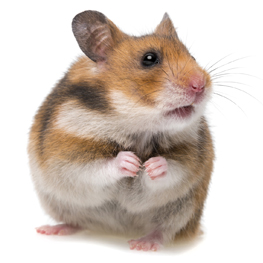
When my daughter wakes up in the morning and gets out of bed, a small ruckus of howls, barks and a tap dance of doggy toenails on linoleum begin downstairs. If you ask Samantha about it, she smiles knowingly to herself. Her dogs, Daisy and Izzy, are over the moon to greet her every morning. This type of unconditional love is what most parents are after when we imagine what it might be like to introduce a pet into our home. Just don’t expect this type of happy harmony to happen overnight.
Dogs and cats are not the only animals that make great pets for kids. If you are looking in the fuzzy pet category, consider an older dog, a pair of kittens, a guinea pig, a pair of gerbils, hamsters or mice, or even a rat. Remember that an older pet without special-needs is usually going to adapt to busy family life more easily than a brand new anything.
In the non-fuzzy category, consider hermit crabs, an ant farm, small lizards, non-poisonous snakes, multiple goldfish, one betta fish or a pair of small birds. If you opt for carnivorous pets, just make sure you are up for the mealtime ritual that may not sit well with the squeamish. In other words, make sure you know exactly what you are getting yourself into before you flourish your debit card.
But once you are informed and ready to slide your plastic, pat yourself on the back as you remember this list of potential benefits of pet ownership for kids:
Be reasonable, of course. Your snake may not be much of a snuggler and your guinea pig may keep your child awake at night before those nightly rooting noises become comforting.
Because every child and every pet are different, assume your child is not yet old enough to care for pets without supervision, and monitor them both for thoroughness of care no matter what your child’s age. So much of pet satisfaction comes after adjusting everyone’s expectations to reality.
Your pets will likely grow attached to your kids first. But if you are an affectionate, caring, consistent pet parent, and you play your treats right, your animals just might have a little unconditional love left over for the person who pays the bills.
Prepare kids to care for pets
Don’t assume kids intuitively know how to care for pets. Taking responsibility for another life is a big step and should be approached incrementally according to developmental readiness:
Christina is an animal lover who has cared for guinea pigs, cats, dogs, fish, gerbils, sheep, even ponies, but never snakes. Her pet-loving daughter loves little dogs, but she is strictly a big dog fan. Her latest book is The Art of Making Time for Yourself, A Collection of Advice for Moms.
Calgary’s Child Magazine © 2024 Calgary’s Child